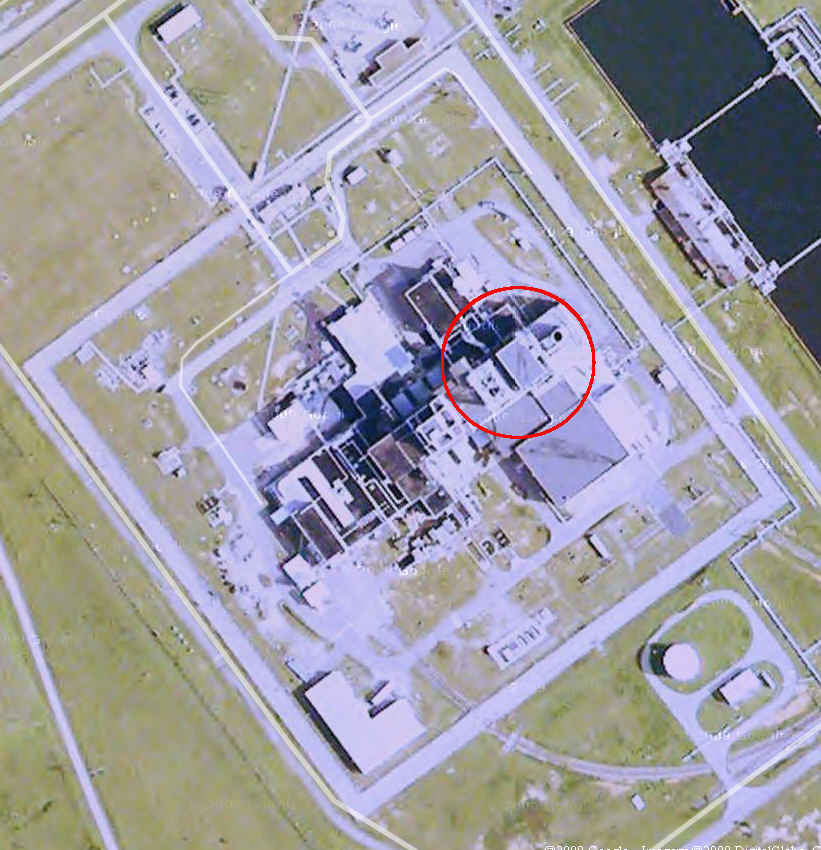
|
4 June 2009
| http://www.nytimes.com/2009/06/04/us/04nuke.html
Nuclear List Called No Threat By THE ASSOCIATED PRESS Published: June 3, 2009
WASHINGTON (AP) — Government officials said Wednesday that the accidental
Internet posting of a list of government and civilian nuclear facilities
and their activities in the United States included no information that
compromised national security. Energy Secretary Steven Chu, who was questioned
Wednesday at a House hearing about the disclosure, expressed concern, however,
with respect to a uranium storage facility at the
department’s Y-12 complex in Oak Ridge, Tenn. The facility holds large
quantities of highly enriched uranium, which if obtained could be used to
fashion a nuclear weapon. “That’s of great concern,” said
Mr. Chu, referring to the Y-12 site. “We will be looking hard and making
sure physical security” of the Y-12 sites “is sufficient to prevent
ecoterrorists and others getting hold of that material.” |
| Integrated Safeguards: U.S.-IAEA Safeguards Agreement and U.S.-IAEA
Additional Protocol
http://dtirp.dtra.mil/products/pdfs/612p.pdf This pamphlet provides an introduction to the provisions of the U.S.-IAEA Additional Protocol (AP) and the likely impacts associated with the AP's implementation. Following a short history of events leading up to the entry into force of the U.S.-IAEA Safeguards Agreement, the pamphlet describes the need for the AP and for U.S. participation in the IAEA's integrated safeguards regime. Provisions designed to ensure the United States is able to protect its national security, proprietary, and proliferation-sensitive information from disclosure are also discussed. [Excerpt] Defining a Site The Model AP [US-IAEA Safeguards Additional Protocol] narrowly defines a “site” as being an area delineated as a facility, a closed-down facility, or a location outside facilities where nuclear material is, or was, used as specified in relevant design information. For locations outside facilities where nuclear material was customarily used, the definition of a site is limited to locations with hot cells, which are defined as locations where activities related to conversion, enrichment, fuel fabrication, or reprocessing were conducted. A site also includes all collocated installations providing essential services. These include: • hot cells for reprocessing irradiated material not containing nuclear material; U.S. AP Annex I Activities to be Declared List manufacture or assembly of: • aerodynamic separation nozzles or vortex tubes Also: Complementary and Managed Access under the U.S.-IAEA Additional Protocol This pamphlet reviews the complementary and managed access provisions contained in the U.S.-IAEA Additional Protocol (AP) and describes how these provisions are expected to be implemented in the United States. The role and purpose of security vulnerability assessments in protecting DoD equities is also discussed. Understanding the U.S.-IAEA Additional Protocol National Security Exclusion
This pamphlet is designed to help treaty implementers understand the U.S.
right to invoke the national security exclusion provision under in the U.S.-IAEA
Additional Protocol. The pamphlet answers key questions concerning the NSE
and describes the effect of applying the NSE where DoD facilities, programs,
and other activities are located. |
| http://dtirp.dtra.mil/products/products/408p.htm
U.S.-IAEA SAFEGUARDS AGREEMENT From 1981-1988, the IAEA selected different commercial fuel fabrication plants and power reactors for the application of safeguards at approximately 2-year intervals. From 1990-1993, the IAEA did not select any U.S. facilities due to budgetary constraints. In 1993, President Clinton announced that the United States would place under IAEA safeguards fissile material it considered beyond its defense needs. The initiative helped demonstrate transparency and the irreversibility of the dismantlement process, while underscoring U.S. support for the NPT. The IAEA resumed inspections in 1994 and is reimbursed by the United States for associated expenses. At present, the following materials at the following four sites have been placed under IAEA safeguards and are inspected monthly by IAEA inspectors: * highly enriched uranium (HEU) at the DOE Y-12 Plant at Oak Ridge National Laboratory in Oak Ridge, Tennessee (safeguards inspections are expected to end in 2005, after materials have been transferred to the Savannah River site);
|
| 1 June 2009
Secrecy News happily announces a Sensitive but Unclassified release on US nuclear processing sites: http://www.fas.org/nuke/guide/usa/sites.pdf (267pp, 13MB) Cryptome mirror: http://cryptome.org/nuke-sites.zip US Declares Nuclear Sites to the IAEA To the Congress of the United States: I transmit herewith a list of the sites, locations, facilities, and activities in the United States that I intend to declare to the International Atomic Energy Agency (IAEA), under the Protocol Additional to the Agreement between the United States of America and the International Atomic Energy Agency for the Application of Safeguards in the United States of America, with Annexes, signed at Vienna on June 12, 1998 (the ‘‘U.S.-IAEA Additional Protocol’’), and constitutes a report thereon, as required by section 271 of Public Law 109–401. In accordance with section 273 of Public Law 109–401, I hereby certify that: (1) each site, location, facility, and activity included in the list has been examined by each department and agency with national security equities with respect to such site, location, facility, or activity; and The enclosed draft declaration lists each site, location, facility, and activity I intend to declare to the IAEA, and provides a detailed description of such sites, locations, facilities, and activities, and the provisions of the U.S.-IAEA Additional Protocol under which they would be declared. Each site, location, facility, and activity would be declared in order to meet the obligations of the United States of America with respect to these provisions. The IAEA classification of the enclosed declaration is ‘‘Highly Confidential Safeguards Sensitive’’; however, the United States regards this information as ‘‘Sensitive but Unclassified.’’ Nonetheless, under Public Law 109–401, information reported to, or otherwise acquired by, the United States Government under this title or under the U.S.-IAEA Additional Protocol shall be exempt from disclosure under section 552 of title 5, United States Code. BARACK OBAMA. THE WHITE HOUSE, May 5, 2009 |
This shows several sites for which maps were provided in the US IAEA-declaration. |
![[Image]](pict9.jpg)
![[Image]](pict8.jpg)
![[Image]](pict10.jpg)
![[Image]](pict0.jpg)
![[Image]](pict1.jpg)
![[Image]](pict11.jpg)
![[Image]](pict12.jpg)

![[Image]](pict7.jpg)
![[Image]](pict6.jpg)

![[Image]](pict14.jpg)
![[Image]](pict13.jpg)
![[Image]](pict15.jpg)
![[Image]](pict17.jpg)
![[Image]](pict16.jpg)
![[Image]](pict18.jpg)
![[Image]](pict21.jpg)
![[Image]](pict19.jpg)
![[Image]](pict22.jpg)
![[Image]](pict20.jpg)
![[Image]](pict24.jpg)